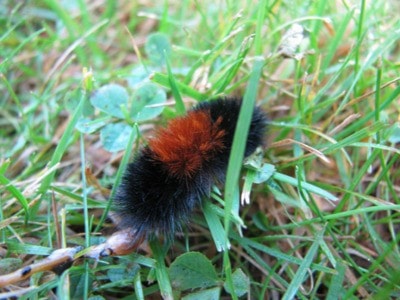Fall is a mad dash around the garden these days.
Busy gathering up tender plants to store out of freezing temperatures, dismantling fountains to be scrubbed and stored, picking up chestnuts so we don’t grow a forest of trees next spring, cleaning up the veggie garden, collecting the last bit of seed, putting the lawn furniture away.
It is a race against the clock…and the weather…to get everything done. Panic is setting in. But just when the pressure is getting intense, there are some surprises to delight the day when least expected.
Working my way along the garden bed, focused on picking up chestnuts from amongst the plants, I came face to face with the brilliant blue flowers on my autumn gentian, Gentiana sino-oronata.
What a blue! A breath of summer sunshine. It certainly exemplifies why David Tarrant favours this colour in the garden.
Just as bright is the yellow autumn hue in the leaves of my gas plant, Dictamnus albus rosea. Well…perhaps not as bright as some other yellows and golds in the fall garden but the gas plant is proving to be a delightful, totally unplanned combination overhanging the gentian blue.
Another autumn sighting in the garden was a cute fuzzy caterpillar, roughly about an inch or so long…a banded woolly bear. This little guy easily catches the eye.
Stiff, short bristles, or setae, with distinctive markings…black at the front and rear ends with a band of bright copper rust in the middle, it is the larva of the Isabella tiger moth (Pyrrhartica isabella).
It is generally thought this particular moth species has only one life cycle per year with the slightly unusual occurrence of the larvae emerging from their eggs in late summer/early fall.
These guys are really bustling around at this time of year, getting their fill of food and looking for a suitable hibernation site under the leaf litter before the winter cold sets in.
They are largely considered beneficial, restricting their diet to such plant material as grasses, clover, plantain and dandelions.
It has been found the caterpillars produce a repellent chemical through eating leaves high in alkaloids as a way of killing the larvae of parasitic flies that prey on soft-bodied caterpillar species.
Banded woolly bears also produce a cryoprotectant chemical that enables them to withstand freezing temperatures. One study in western Pennsylvania demonstrated this caterpillar could withstand –5C temperatures over a period of seven days with 100 per cent survival rate.
When the weather warms in spring, the banded woolly bear caterpillar resumes eating before spinning its cocoon for the pupation stage.
Adult Isabella tiger moths emerge in roughly two weeks identifiable by their honey brown forewings with black spots. Sex is determined by the colour of the hind wing. Males have the same honey brown colouring as the forewing…females have a pinkish hue on theirs.
Females of this moth species have a unique way of releasing pheromones to attract any males in the area.
In most moths, the sex gland is rotated outward and exposed to the air so the sex-attracting pheromone evaporates from its surface. In the Isabella tiger moth, the gland is a branched tube, or pair of tubes that is invaginated…folded inwards so that the outer surface becomes an inner one. The release of sex pheromone, affected by the rhythmic protrusion and retraction motions of the female’s abdominal tip, causes a visible emission of liquid droplets of vapour. This is the first known incidence in moths of an air-borne sex-attracting pheromone being released as a liquid.
Enough about fuzzy caterpillars for now. Have to find my old mill hardhat. These falling chestnuts are lethal!
Leslie Cox co-owns Growing Concern Cottage Garden in Black Creek. Her column appears every second Friday.
